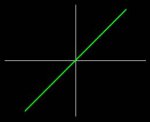Thermionic valves maybe?We used an hp audio oscillator as the reference and a Heathkit scope to check the frequencies of audiometers. This was in the late 50s. Vacuum tube days, or should I say valves?
Solid state devices post dated me by some years. They were around when I started higher education but education takes some years to catch up. Maybe more correctly, it has an inherent lag.
We got lumbered with triodes and pentodes that had their days numbered and were pretty much off the radar by the time I got to work.
I have come across thyratrons and mercury archaic rectifiers. But generally to replace them with solid state. That's mostly where my area of expertise is. Power electronics.
That said, when I first started in the field I worked for a company that had been making variable speed DC drives for decades, mostly for the paper making industry.
These were electro-mechanical. Carbon pile regulators that squeezed a pile of carbon discs together to reduce resistance.
And faceplate regulators that took demanded speed and actual speed into a differential gearbox and moved an arm around a big potentiometer to vary resistance.
In terms of speed holding, these worked extraordinarily well. Even by modern standards.
I digress.




